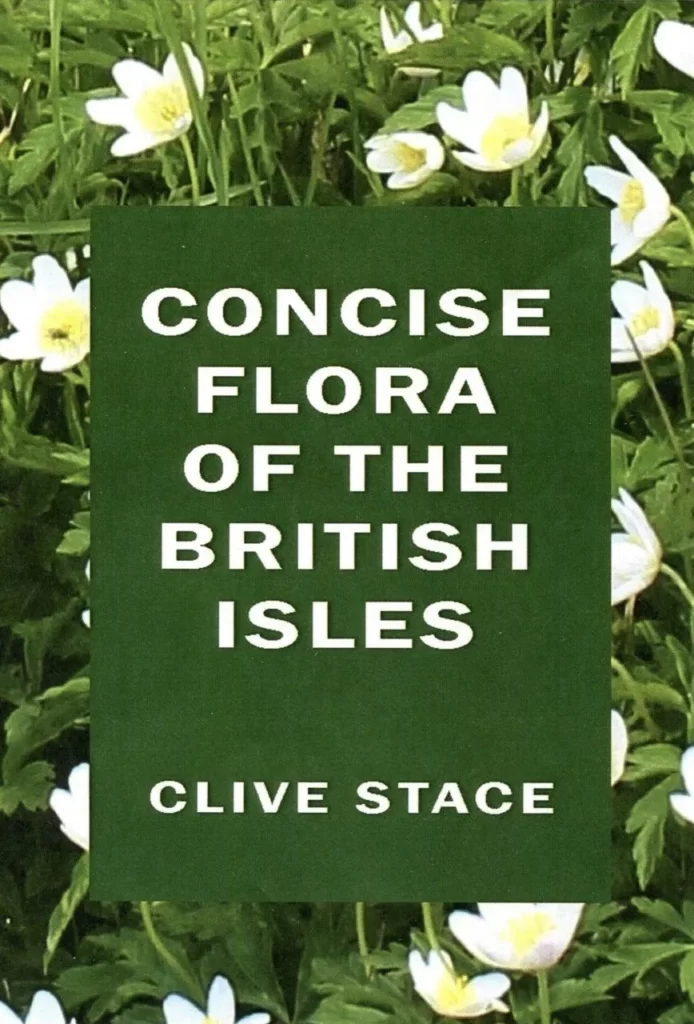Since its first publication, in 1991, Clive Stace’s New Flora of the British Isles has become the standard work on the identification of the native, naturalised and repeatedly occurring casual vascular plants of Britain and Ireland. It has also been hugely influential in terms of the taxonomic treatment and nomenclature adopted in Britain and Ireland. Taking this into the field was always a major undertaking, addressed by the publication in 1999 of an abridged Field Flora. Unlike its big brother, ‘Baby Stace’ as it became known was never updated, its nomenclature and systematic treatment lacking the major revision brought about by the adoption of molecular insights in the 2010 third edition of the larger work. Long out of print, its obvious utility saw it command high prices in the second-hand market. This alone must have suggested that there was a demand for a new edition, and with the publication of a revised reprinted fourth edition of the New Flora, likely to be its last, in 2021, there was clearly an opportune moment to produce a new field-friendly version.
The new Concise Flora is remarkably comprehensive, covering all of the taxa treated in the 2021 New Flora revised reprint and even adding as an addendum the fern Stenogrammitis myosuroides, which was discovered in Co Kerry in 2019. It manages to pack this into 804pp, compared with the New Flora’s 1,266pp, with a cover only c. 82% of the latter’s size, making it just about pocketable. Measuring in at a depth of just 26mm (cf 43mm) and with a weight of c. 600g compared with c. 1.4kg, the new volume definitely ticks the portability boxes.
So, what has been sacrificed to achieve this? The main space-saving has been in the indexing, reduced by over 100 pages by including genera and families only. Finding a particular species or hybrid now necessitates going to the genus and scanning the following pages of text. Specific descriptions have been removed and many of the illustrations have been lost, although there are still 32, mainly the photographs used in the New Flora. I am not convinced that those of the Carex utricles, or of the leaves of Salix, Sorbus, Cotoneaster and Alchemilla, are particularly useful at this scale, beyond as a method of ruling out some obviously different taxa which you may have arrived at through problems working the keys.
It is perhaps telling that Stace has chosen to call this a Concise Flora rather than continuing the use of the Field Flora title, for it is just that: a neatly abridged and more portable rendering of the New Flora rather than a field guide. Indeed, in his preface Stace notes that many of the key characters used are not easily observed in the field and this certainly is a criticism which can be levelled. Many using it, though, will have been in the same situation before but having carried more than twice the weight in Flora to the plant. At least by using it you know which bits you might need to concentrate on and take back to study in more detail.
One of the weaknesses of the various iterations of the New Flora for me was in the rather sparse descriptions of taxa, which would often see me reaching for the more fulsome accounts in the earlier standard flora by Clapham, Tutin and Warburg. Things were pared down in Stace’s New Flora for very practical reasons: it covered nearly twice as many taxa, which meant that the reader was reliant on successfully using the keys to provide an identification, while the lack of additional information made corroboration difficult. This is now taken to its logical extreme in the Concise Flora.
The taxonomic treatment has always been a rather personal one, generally following the Angiosperm Phylogeny Group recommendations, although not slavishly. The same could not be said for the Pteridophytes, where major revisions to the Blechnaceae and some other families, such as Lycopodiaceae, have not been taken up, despite being widely accepted elsewhere in Europe and beyond. Guided by a lifetime’s experience and the application of common sense, however, the approach taken here for the most part works well, although I am still upset that the treatment of Dryopteris adopted in the 3rd edition was not maintained – the reversion to an earlier ‘lumped’ approach to the D. affinis aggregate is, I think, a retrograde step. It is perhaps a mark of the respect in which the Flora is held that I come to expect infallibility of distributional notes and total inclusion of everything I find. I was therefore surprised that Cardamine occulta, recognised in 2016 and now present in 20+ British and Irish vice-counties, and surely overlooked elsewhere for lack of inclusion, gets no mention. With a few minor quibbles aside in respect of current distributions (e.g. Dryopteris cristata, which is now almost entirely restricted to the Norfolk Broads, is given as ‘S.E. En, Renfrew’; it was last definitely recorded in the latter in 1969), the book’s accuracy and coverage are impressive. I cannot imagine anyone with more than a passing interest in the British flora not having this book, and I suspect that many may now rely on this much cheaper alternative as their British Flora of choice.


